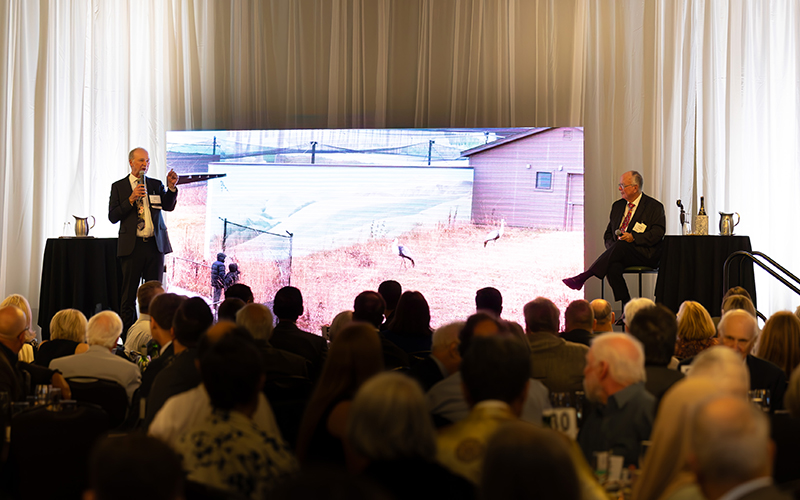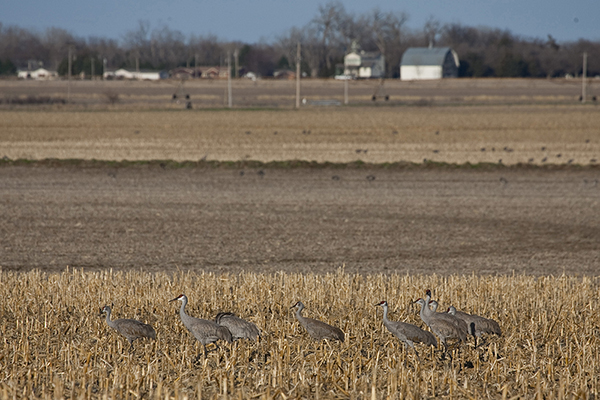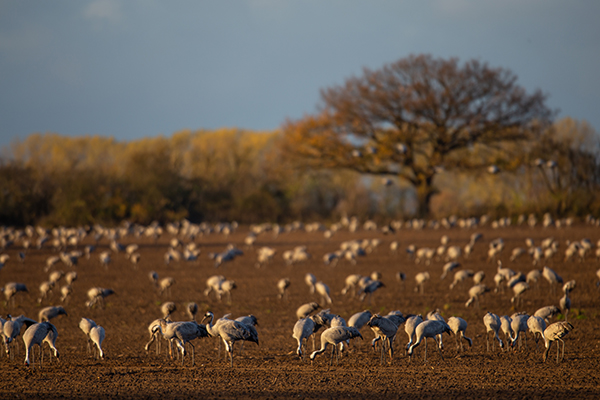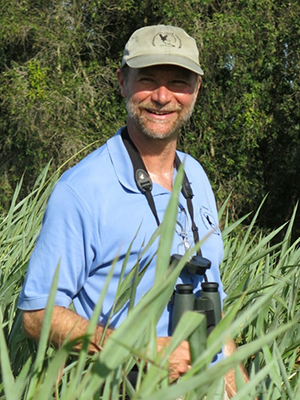What a party! It was a joy to celebrate our 50th anniversary gala together with all of you, in person and in spirit, who made possible our past 50 years of conservation impact for cranes and so much more. Thank you! Back in 1973, who could have believed we would evolve into a global conservation leader with staff and programs in the places that matter most for endangered cranes. Who would have predicted that we would have such a beautiful headquarters and Cranes of the World visitor experience in Wisconsin, offices in China, Vietnam, Kenya, Uganda, Rwanda, Zambia, South Africa, and Texas, regional programs and partnerships with local communities, organizations, governments, universities, and businesses in 25 countries across North America, Asia, and Africa – and a network of craniacs in more than 50 countries worldwide.

I couldn’t be more excited about what we’ll achieve together over the next 50 years.
One of the big challenges we’ll focus on is the conservation of cranes on agricultural lands. When we started our journey together back in 1973, most of the world’s crane species depended on natural wetlands and grasslands, often far from human settlements. In subsequent decades, the intensification of agriculture worldwide and the loss of natural habitats has pushed all 15 species of cranes into farming landscapes for all or part of the year. Cranes and farmers are in conflict in many of these places. In East Africa, endangered Grey Crowned Cranes now depend on the croplands that replaced the wetlands and savannas where they once thrived, and farmers beat, stone, and poison cranes that feed on their newly planted crops. In China, endangered Siberian and White-naped Cranes that venture onto farmlands eat poison-laced grain set out to deter geese and rats from feeding on crops. There are important exceptions – Sarus Cranes continue to thrive on the densely populated agricultural landscapes of India, where they are held sacred by Hindu farmers –but we urgently need solutions that foster a lasting peace between farmers and cranes on five continents.

This August, I traveled to Estonia with several International Crane Foundation staff and more than 80 colleagues from 20 countries across Europe, Asia, and Africa for the 10th international meeting of the European Crane Working Group. Thanks to the great leadership of our host, Dr. Ivar Ojaste of the Estonian University of Life Sciences, we enjoyed a wonderful week of sharing and fellowship with colleagues new and old.

We were especially interested in learning about the different European strategies for reducing crop damage caused by Common Cranes (also known as Eurasian Cranes) and how we might increase our collaboration and lesson-sharing with the European Crane Working Group members. The Common Crane and Sandhill Crane are the two most successful crane species in the world and share many similarities. Both species are recovering from overhunting and habitat loss during the 19th and early 20th centuries and are highly dependent on wetlands and croplands in the agricultural landscapes that displaced their natural habitats. Both species are increasingly in conflict with farmers over damage to crops. Anne Lacy, International Crane Foundation’s Director of Eastern Flyway Programs – North America, shared our experience with developing Avipel, a non-toxic chemical deterrent that tastes terrible to cranes and other birds when applied to crop seeds, and our efforts to make it affordable, convenient, and effective for the farmers who use it. Our impressive colleagues from Germany, Sweden, Finland, Norway, Hungary, and elsewhere shared their ideas and experiences from across Europe to help us solve this global challenge. Farms with a more diverse mix of crops, fields with lure crops, affordable deterrents, and better support programs for farmers who support cranes and other wildlife are all part of the solution.
I returned to Wisconsin with renewed energy and enthusiasm. The future of cranes on farmlands is just one of the many conservation challenges we will solve together through the innovative work of our staff, our deep and wonderful partnerships, and all of you who’ve made this work possible for so long. Another 50 years, wow! We can’t do it without you.

Dr. Rich Beilfuss,
President and CEO
